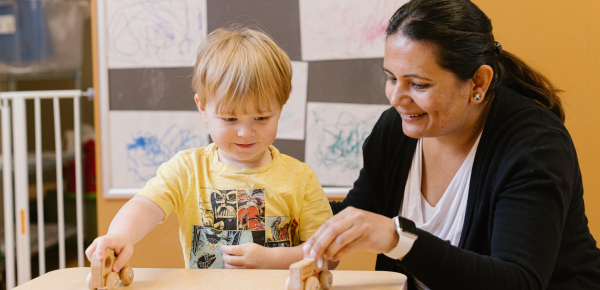Responding to Your Child’s Behavior
By: Dr. Rachel Kramer, Child Psychologist, and consultant to the LEAP Schools
Recently I’ve had several conversations with parents about a very useful parenting tool that I first read about in the writings of psychologist Ross Greene. This strategy involves categorizing children’s behavior into three different Baskets (A, B, and C) as a way to help parents make decisions in the moment about how to respond to different situations. To be clear, this strategy is a useful tool for parents to hold in mind and is not meant to be explained directly to children.
Behaviors that are in the “A-Basket” are situations in which the rule is clear and always enforced, and children do not get a choice. Often, A-Basket behaviors have to do with health and safety. For example, you will always require your child to wear a seatbelt or ride in a car seat when they are in the car, or you will always require your child to wear a helmet if they are riding a bicycle or scooter. A-Basket behaviors are easy to respond to because parents don’t have to think about how to respond. The rule, and a parent’s response, will be the same every time no matter the circumstances, location, or situation.
At the other end of the spectrum, C-Basket behaviors involve situations in which parents have decided that their child can make the choice. Even if your child is making a choice that might be different from the decision you would make, when parents decide that a behavior is in the C-Basket, they have decided that their children are in charge and parents are not going to argue. What are examples of C-Basket behaviors?
- Preschoolers: Your child wants to read the same book over and over again despite the fact that they have memorized the story and are ignoring the many wonderful library books sitting on the coffee table. You decide not to argue and let them make that choice.
- School-aged children: Your child declares that they want to sleep in their clothes so they don’t have to spend time getting dressed in the morning. You shrug and say, “Okay.”
- Tweens and teens: Your child develops a passion for a heavy metal band and wants to listen to the band’s music nonstop. You set clear boundaries regarding when they need to use headphones, talk with your child about listening to headphones at a safe volume, then you let your child listen to their heart’s content.
B-Basket behaviors are the trickiest. These are situations where under certain circumstances you might let your child decide, but at other times you are in charge of making the decision. For example, you might generally allow your child to pick their own clothes, but when your family is going to a religious service or an event with extended family, the rule shifts, and you have some involvement in your child’s choice of clothing. Often, particularly for highly sensitive or intense children, B-Basket behaviors lead to conflict. Children might react poorly to the fact that the rules are flexible rather than fixed. Communication is crucial. When a rule only gets enforced some of the time, children feel they have less control, and some children feel a strong need to push back.
When families are under stress or parents notice an increase in conflict with a child, it can be useful to consider how to move some items out of the trickier B-Basket and into either the A-Basket (‘I’m going to enforce this every time’) or the C-Basket (‘I can’t keep arguing about this with my child, I’m putting this in the C-Basket for now’). For example, perhaps you have been having a lot of disagreements about the fact that your child is not making their bed in the morning, and in the interest of having fewer arguments, you decide to temporarily put that behavior in the C-Basket and just close the door of your child’s room each morning so that you won’t have to look at an unmade bed. In communicating about this with your child, you might say something like:
“I’ve noticed we’ve been arguing a lot about making your bed. I know you feel you don’t have time in the morning, and you know I like your room to look neatI’m hoping we can have one less thing to argue about so I have decided to be flexible. For now, I won’t ask you to make your bed. We can re-visit the situation at winter break.”
Note that the baskets are not fixed and will likely change as your child is growing and developing. For example, when your child is in elementary school, you might make a rule that they have to straighten up their room as part of their evening routine. Perhaps that routine worked well for several years. Now your child is in 8th grade and you’re finding that you and your adolescent are arguing quite a bit. This could be a useful time to re-think the baskets and re-prioritize with the goal of decreasing conflict and increasing connection. In practice, perhaps you have a collaborative conversation with your child about setting a goal of straightening their room once a week, then remind yourself that you have shifted daily room straightening to the C-Basket.
If you are parenting with a partner, A, B, and C Baskets are also a useful tool to promote communication and cooperation. When children are not present, parents can discuss which behaviors fall into which baskets. Some couples might find it useful to keep an ongoing shared list that can be updated as children grow and develop and their needs and behaviors change. In the moment, when parents are faced with a challenging situation, touching base about whether something seems like an A, B, or C Basket behavior is a useful shorthand that can help parents quickly get on the same page about how to respond.
Another example of flexible baskets: a middle school student is supposed to read for 20 minutes a day and tells their parent that they have made a plan to do their reading in the morning before school. Rather than immediately saying no and listing all of the reasons the plan won’t work (“You barely make it to the bus stop every morning as it is - there’s no way you have an extra 20 minutes in the morning”), parent and child agree to set up an experiment. For 2 weeks, the parent commits to allowing the child to make a choice about when to do their reading, essentially putting the behavior in the C-Basket. During that time, the parent will not intervene in their child’s morning reading plan. Parent and child schedule a time to re-group in 2 weeks to review how the plan is going. Parent and child also agree on a strategy for keeping track of whether or not reading gets done each day so that they will have data to review at their follow-up meeting. As tricky as it might be for the parent to bite their tongue for the next 2 weeks, this model promotes so many useful skills including flexibility, independence, problem solving, and parent-child collaboration.
You May Also Like

Fortune Telling: How to Manage Anxious Thinking About Our Child’s Future

Early Childhood Learning/Teaching Strategies




